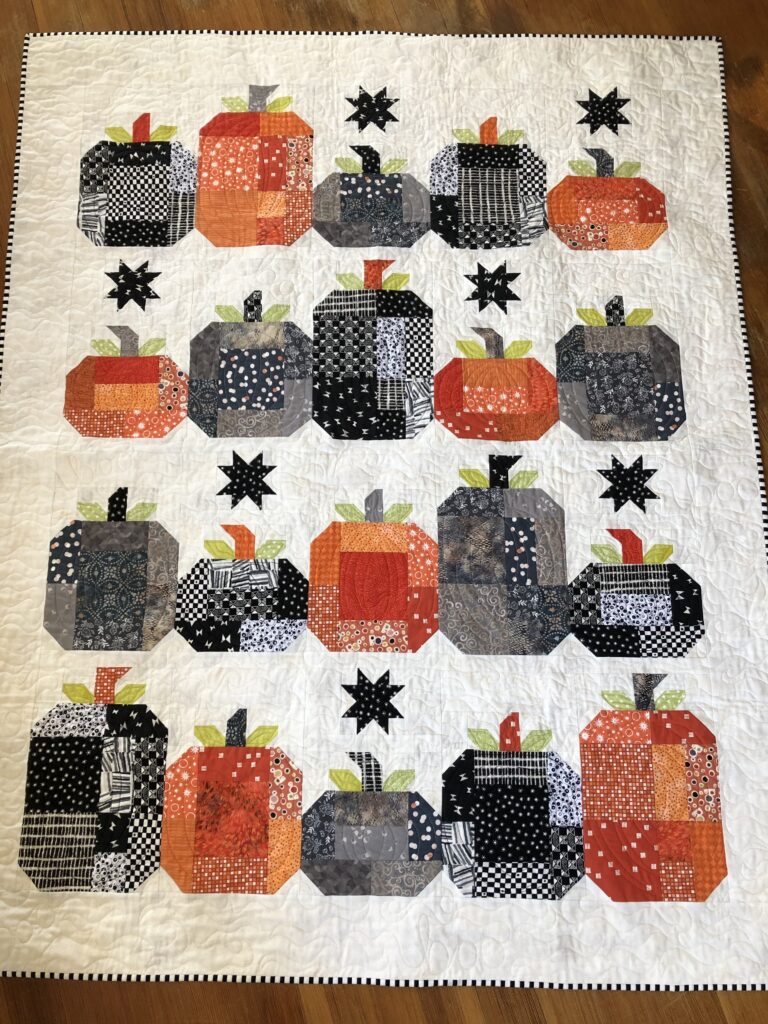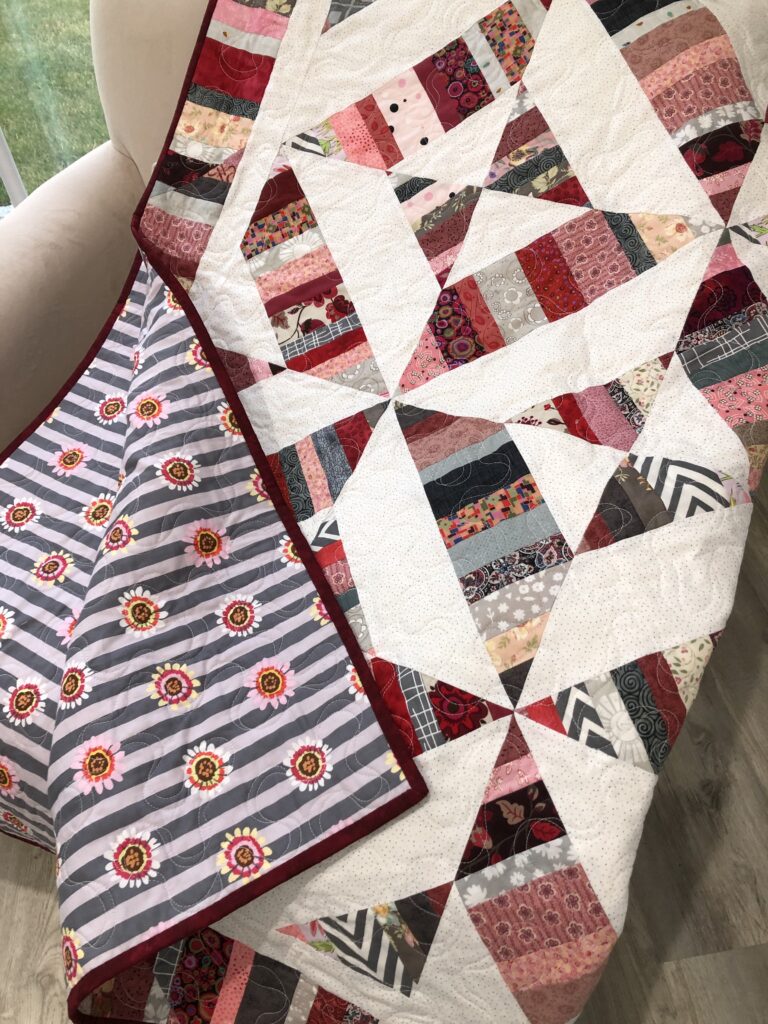
Gale Green began quilting 38 years ago when she was pregnant with her first son. She wanted to make him a baby quilt and she wanted to do it herself. Despite a full time job, Green signed up for an adult ed class at Barrington High School and began a quilt that wasn’t finished until the next year when she was pregnant with her daughter. “Back then,” Green said, “everything – cutting out the pieces, sewing them together – was all done by hand.”
Today, Green has her own cozy studio, equipped with top-of-the-line machines. She showed me a collector’s item, her antique Singer Featherweight. “They were manufactured during the ’30s and ’50s. We all had these – you could take them to classes, they’re only 11 pounds. They just do straight stitch; nothing fancy about them, but they’re little work horses.”
Green first learned to sew in junior high, where she discovered a love of home ec. She made it her major in college, but career prospects for home ec grads were few, and teaching openings were rare. Green turned her skills to the insurance business, a career that lasted 25 years. Yet she always found time to sew. “Everybody says they’re too busy to learn, they don’t have time, but I think that the busier you are, the better you plan your time. When I was working full time and had kids and a house, I still quilted… It’s my happy place. If you don’t fit that into your life, life takes it out of you. You’ve got to have that place to rekindle your inner spirit.”

Green often hears, “You should sell your quilts, they’re so beautiful!” But Green looks at her work very differently. “When you’re selling your craft it’s about how long did that take you, how much you get paid for your time. That takes away the love of it for me. When I make something for somebody, I’m constantly thinking about them, their life or how I met them. They’re always in my mind.” Green attaches a label to document every quilt, with a hand lettered message, dated and signed, on an antique doily. Each quilt is deeply personal.
When Green moved to California in 2003, she formed an enduring bond with the quilters she met there. “They are an amazing community of caring, loving people – they step to the plate for any need that comes up.” In 2011, the California group collaborated on a quilt when the Tohoku earthquake and tsunami hit Japan. A woman from their group had parents who were still over there, and wanted to do something. When she brought her concerns to the group they decided to make a quilt based on the Legend of The 1000 Cranes for good luck. The women folded 1000 tiny cranes by hand – people could donate a dollar and get their name on one. When the quilt was finished, it was donated to the Japanese consulate in San Fransisco and it now hangs in Japan.
The group has rallied for many causes. They are making quilts for fire victims on the West coast and they donate regularly to homeless shelters; they make neo natal quilts for babies in incubators and comforters for veterans in wheelchairs. Though she now lives in Rhode Island, Green and her friends still connect three or four times a month for virtual quilting sessions on Zoom, working together on charity quilts. Green is also a member of CRUSH Community, a non-profit founded by husband, John Green. It raises money for worthy causes, holding an annual fundraising Friendship Quilt event. Last year it was for mynewredshoes.org, which provides new shoes and clothing for children going back to school. Green has continued her generosity in Rhode Island. She recently posted a colorful holiday runner on Facebook and offered it “free to whoever likes it,” providing they write a check to the charity of their choice. Within minutes, a donation went to Tap-In, a food pantry in Barrington.

Today, the price of fabric starts at $13 a yard. Quilting could become expensive, but it is the original recycling craft. “The first quilts were made out of scraps of fabric that would have been thrown away. I have a huge stash of fabric that I’ve gathered over the years – I can’t live long enough to sew it all,” Green said. The neat cupboards and drawers in her studio are filled with folded scraps of every color and pattern imaginable. She sometimes makes memory quilts for bereaved friends, sewn from the clothing that loved ones left behind. When acquaintances get married, she makes the couple a tree skirt and holiday stockings, saving scraps of the fabric. When children come, they get matching stockings. These gifts become family heirlooms.
“Modern people look at the world differently,” Green said. “They don’t place a value on the meaning in objects from past. My son wants to throw out his childhood dresser, imagine! It’s an antique, 65 years in the family. But all he cares about is what it costs.” As if to illustrate her point, her cell buzzes with an incoming text. Green reads it, and laughs. The message is from her son, about the dresser. His conclusion? “It’s not worth anything, Mom.”
But for Green, the meaning is in the giving – she knows that what she gets back is beyond measure. Quilting is her way of caring about people, of connecting and sharing. Her gifts become part of people’s lives, bringing warmth and comfort.
You can’t put a price on that.


